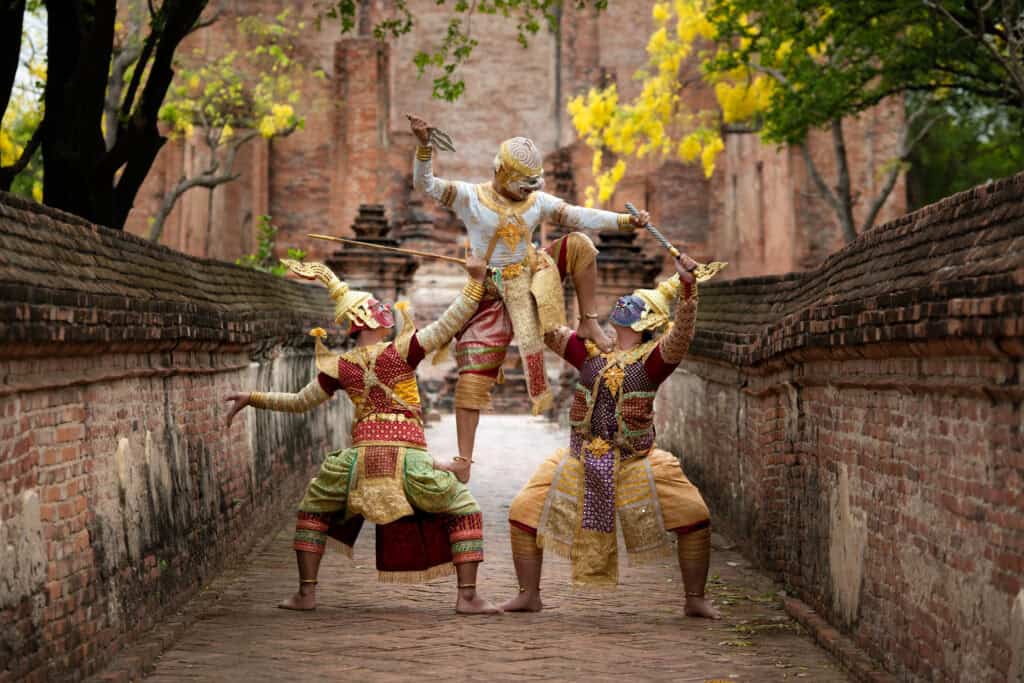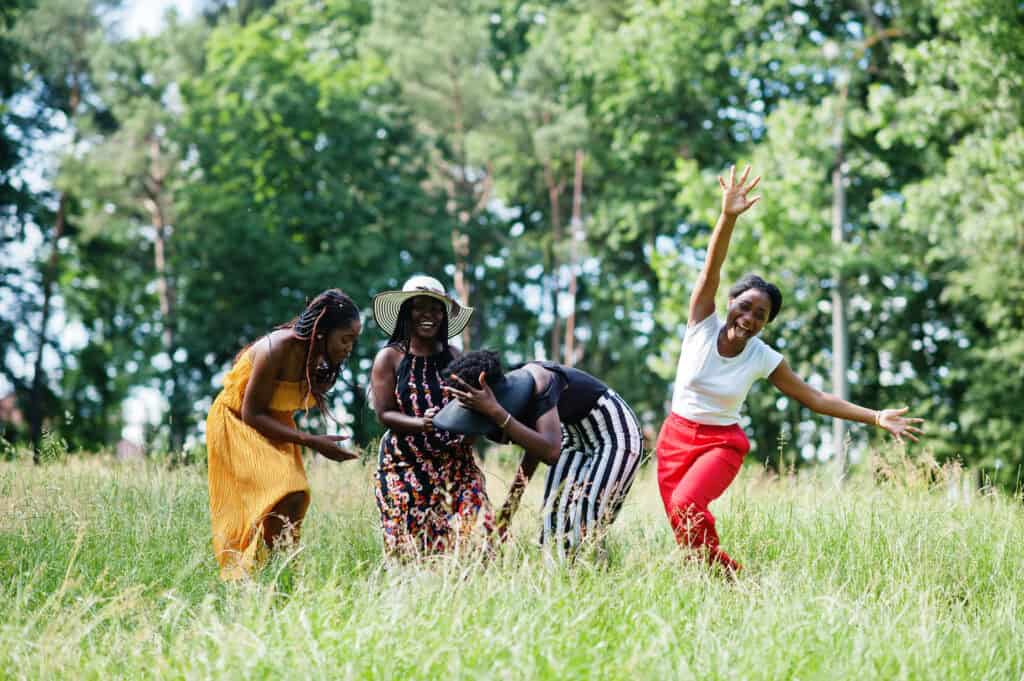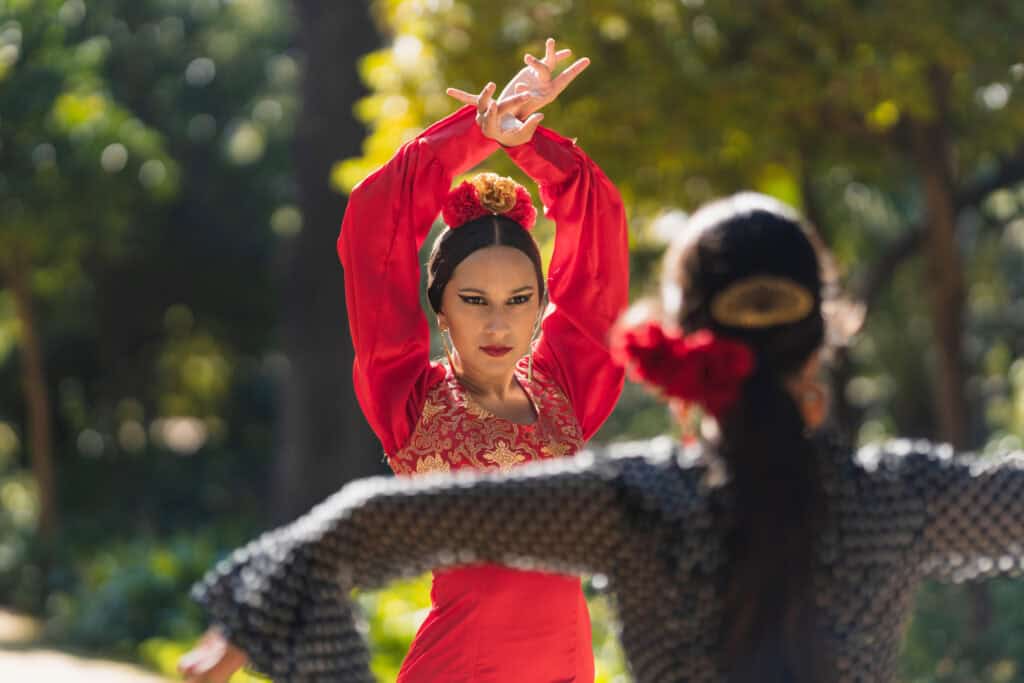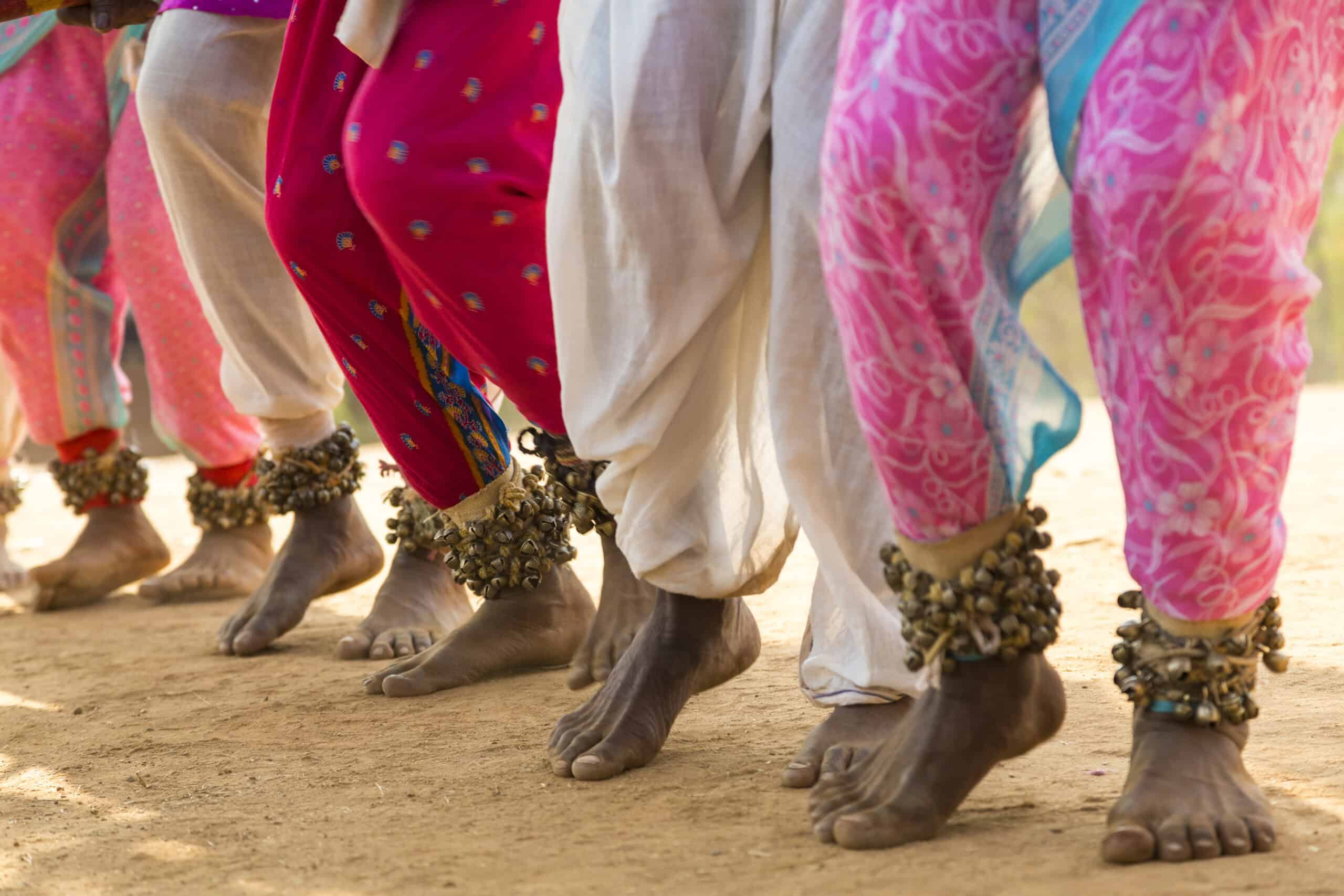What if the most powerful stories we inherit aren’t spoken or written – but danced? Can movement carry memory?
Across cultures and generations, intergenerational movement and dance are far more than performance – they are a living, breathing archive of embodied knowledge, identity, and collective memory.
Across the world, communities use dance not only as a form of celebration or ritual but also as a means of transmitting values, stories and social cohesion.
The growing interest in embodiment across disciplines has led scholars and practitioners alike to recognise the transformative power of cultural dance in fostering wellbeing, transmitting identity, and bridging generations.
Neuroscience Insight
Modern neuroscience supports what dancers have known for centuries: movement changes the brain. Research shows that when we dance – especially with others – our brain releases oxytocin, the “bonding hormone,” and activates mirror neurons that foster empathy and connection (6, 12). Dance doesn’t just express emotion – it shapes it, helping us build trust, reduce stress, and feel more deeply connected to those around us.
However, while these findings are compelling, the underlying neural mechanisms deserve deeper exploration. For example, how oxytocin levels are measured during dance is typically done through blood or saliva sampling in pre-post activity designs, while mirror neuron activity is often inferred through motor resonance tasks using EEG or fMRI. Studies have used neuroimaging to demonstrate increased activation in the prefrontal cortex, motor cortex, and limbic system during both solo and group dance (8, 11).
Importantly, fMRI and EEG studies show that improvisational dance tends to activate brain regions associated with creativity (e.g., medial prefrontal cortex), while structured movement activates circuits involved in memory and precision (e.g., basal ganglia, supplementary motor area). Group dance, in particular, increases activity in areas linked to social bonding and synchronised movement, such as the superior temporal sulcus. This distinction offers valuable insight into how different forms of dance affect cognitive and emotional processes.

Dance as a Vessel of Embodied Knowledge and Intergenerational Memory
Embodiment theory posits that knowledge is not only cognitive but also grounded in the body’s experiences, perceptions and interactions. In this view, dance exemplifies this principle: it is both a method of expression and a way of knowing.
Why Movement Is More Than Expression—It’s a Way of Knowing
Cultural dance, particularly intergenerational movement and cultural dance traditions, is often understood as an embodied philosophy. Here, cognition and identity are enacted through bodily motion, and intergenerational movement, grounded in lived experience. This idea is echoed in the work of Koch and Fischman (2011), who view Dance Movement Therapy (DMT) as an enactive process where bodily engagement fosters psychological and cognitive integration (13).
In the Peruvian Andes, traditional dance functions as a dynamic archive of memory, history and cultural resistance. Callaghan (2012) describes Andean dance as a “repository” of collective experience, embedding historical trauma, celebration and resistance into its choreography (10).
Different Frameworks
The concept of enactivism (14) provides a foundational model for understanding how cognition arises from sensorimotor engagement with the world. Similarly, work on somatic epistemology (15) argues that bodily movement is not only expressive, but a primary mode of knowing – especially within intergenerational movement and cultural dance contexts.
Additionally, the field of performance-as-research (PaR) in dance studies supports the notion that knowledge can be generated through artistic practice itself. PaR situates movement as both method and outcome, bridging empirical and experiential knowledge – particularly relevant when examining intergenerational or culturally rooted practices.
Intergenerational Movement as a Site of Cultural Transmission
Dance plays an important role in intergenerational learning and cultural continuity. Unlike many verbal traditions, it provides a unique environment where people of different ages share space, time, and movement – often outside verbal communication. To strengthen the parenting lens on embodied relational practices check How Can Parents Build Emotional Resilience in Children?
How Dance Connects Generations Without Words
Research on intergenerational somatic dance highlights how such practices foster wellbeing, social cohesion and mutual respect (5). For example, participants in their study reported a “reclaiming” of wellbeing through movement, liberated from neoliberal ideals of productivity.
In some communities, such as Greek American families, ethnic identity is transmitted through traditional dance, which acts as an “embodied language” for sharing cultural values, beliefs and community belonging between generations. Dance becomes a form of nonverbal pedagogy, teaching children not only steps but ways of being.
PAUSE AND REFLECT
When was the last time you moved freely with others – without thinking, just feeling?
How did that moment reflect your cultural roots or intergenerational story?
Dance and Embodied Agency in Older Adults
Contrary to the marginalisation of older bodies in popular culture, research highlights how dance offers older adults a deep sense of embodied agency. Houston (2024) discusses how socially engaged dance practices enable older dancers – including those with neurodegenerative conditions – to experience autonomy and relational connection through improvisation (11).
You can explore therapeutic use of rhythm and movement for nervous system regulation across age groups reading How Music and Movement Support Neurodivergent Children.
Empowering Elders Through Improvisation and Connection
However, as with many studies on physical activity and wellbeing, these findings, while compelling, must be interpreted with attention to causality and possible confounding variables. Do older adults experience more agency because they dance – or are individuals who already feel more autonomous more likely to engage in dance in the first place? Similarly, do emotional and cognitive improvements result directly from movement, or from the increased social inclusion and ritual structure that often accompany dance practices?
Creating Inclusive Spaces
This causal ambiguity does not diminish the observed benefits of dance. However, it highlights the importance of recognising potential bidirectional effects and confounding factors in interpreting results. Future studies would benefit from more rigorous designs that distinguish between movement-based and context-based contributors to wellbeing.
Ultimately, these practices increase empathy, understanding and create inclusive spaces where all bodies, regardless of ability or age, are recognised and valued.

Dance, Wellbeing, and Healing
Dance is increasingly recognised as a therapeutic practice that supports psychological healing and social resilience. In Dance Movement Therapy (DMT) and somatic practices, intergenerational movement and cultural dance become a medium for processing trauma, building connection and fostering mental wellbeing.
Some researchers describe DMT as an effective tool in social work for increasing parent-child attachment and promoting embodied relationship development across generations (8).
Additionally, dance also serves as a spiritual practice. For many participants, it offers altered states of consciousness, emotional release and a deeper sense of life purpose and connection.
Movement for Everyone
Intergenerational movement and cultural dance can be integrated into daily life through small, intentional rituals. Here are a few ideas:
- Reconnect with Ritual: Create a small daily movement ritual – stretch with the sunrise, sway with music while cooking, or pause for a mindful breath and movement break mid-day.
- Ask an Elder to Teach You: Even one simple gesture, song, or step carries history. Invite a parent, grandparent, or community elder to share a dance or movement they remember.
- Start a Shared Movement Playlist: Gather songs from different generations in your family or community. Dance together – or alone – with those tracks, letting your body interpret their stories.
- Create a Movement Exchange: Record a short video teaching someone from another generation a dance move you love. Ask them to do the same. Swap videos or meet in person to share!
- Host a Family or Friends Dance Night: No pressure, no performance. Pick music from different eras and just move together.

- Learn a Dance from a Different Culture: Approach it with respect and curiosity. Focus on what the movement teaches about values, connection, or storytelling.
- Practice Moving Meditation: For 5 minutes, focus only on your breath and slow, fluid movement. No mirrors, no judgment.
- Dance for Play, Not Perfection: Put on music you loved as a child and move without choreography or goals.
- Mark Transitions with Movement: Use a small gesture to mark daily transitions – stretch after closing your laptop, dance while making tea, or step outside to breathe at sunset.
Each of these practices is a form of intergenerational movement and cultural dance as a living archive of resilience and relationship.
Cultural Connection
Around the world, physical movement has long been tied to shared meaning. In Japan, the art of Bon Odori encourages everyone – young and old – to dance together during summer festivals. The steps are simple, repetitive and designed to bring people into harmony. It’s not about performing – it’s about belonging. What if everyday movement embraced this same intention?
In many cultures, dance has been used not only to celebrate but to resist. From the gumboot dances of South African miners to Indigenous powwows reclaiming stolen traditions, intergenerational movement and cultural dance become political. Every time we move together, we carry forward stories of survival, joy, and dignity.
Embodied Dance as Cultural Resistance and Identity Preservation
Embodied traditions also function as sites of cultural resistance. Research highlights how feminist and postmodern dance studies emphasise the political nature of the female dancing body as a symbol of both oppression and resistance (6, 7). In many indigenous and diasporic communities, intergenerational movement and cultural dance resist cultural erasure by asserting local values and identities.
This view aligns with research positioning embodied practices as essential tools for negotiating identity, memory, and social power. Dance, therefore, is thus both a personal and collective act of survival.

Final Thoughts
Intergenerational movement and cultural dance are powerful embodiments of memory, resistance, and resilience. They transmit knowledge, shape identity and foster collective wellbeing through movement. As these traditions continue to evolve, they offer rich potential for cultural preservation, social justice and holistic healing in an increasingly fragmented world.
Integrating deeper insights from neuroscience can help us gain a more scientifically grounded understanding of why dance is such a powerful tool for connection, cognition, and care.
At the same time, to deepen our understanding of dance as intervention, we must rigorously examine what elements – movement, rhythm, community, or symbolic meaning – are actually driving outcomes. By acknowledging the complexity of these interactions, we uphold the scientific integrity of embodied research while honouring its transformative potential. To bridge embodied and cognitive traditions read The Greatest Logical Mind in History: Thinkers Who Changed the World— it’s showing how legacy is passed not just in movement, but in logic.

Reflect
Who taught you to dance – formally or informally? A grandparent, a friend, a community elder?
Share this blog post with someone who has shaped your movement story – or let it inspire your next step.
References:
- Whatley, S. (2022). Embodied cultural property: Contemporary and traditional dance practices. International Journal of Cultural Property, 29(2), 171–181. https://doi.org/10.1017/s0940739122000108
- Ssebulime, A. (2024). Embodying tradition, imagining home: Baakisimba Dance and the Ugandan Diaspora. Dance Chronicle, 47(3), 486–505. https://doi.org/10.1080/01472526.2024.2380972
- Pope, L. (2024). Embodied Social Action: How Dance/Movement Therapy Can Support Resistance against Systems of Oppression. Expressive Therapies Capstone Theses. 826. https://digitalcommons.lesley.edu/expressive_theses/826
- Kringelbach, H. N. & Skinner, J. ”Introduction: The Movement of Dancing Cultures”. Dancing Cultures: Globalization, Tourism and Identity in the Anthropology of Dance. New York, Oxford: Berghahn Books, 2012, pp. 1-26. https://doi.org/10.1515/9780857455765-003
- Barbour, K., Clark, M., & Jeffrey, A. (2020). Expanding understandings of wellbeing through researching women’s experiences of intergenerational somatic dance classes. Leisure Studies, 39(4), 505–518. https://doi.org/10.1080/02614367.2019.1653354
- Giese, J., & Keightley, E. (2022). Dancing through time: A methodological exploration of embodied memories. Memory Studies, 17(2), 444–457. https://doi.org/10.1177/17506980221126611
- Stevenson, A. (2019). Soul and Spirit: Cultural Healing Practices and the Roots of Dance/Movement Therapy. Dance/Movement Therapy Theses. 53.
https://digitalcommons.slc.edu/dmt_etd/53 - Grindheim, M., & Grindheim, L. T. (2021). Dancing as Moments of Belonging: A phenomenological study exploring dancing as a relevant activity for social and cultural sustainability in early childhood education. Sustainability, 13(14), 8080. https://doi.org/10.3390/su13148080
- Young, K. E. (2011). Living culture embodied: constructing meaning in the contra dance community. Electronic Theses and Dissertations (Vol. 726). https://digitalcommons.du.edu/etd/726
- Callaghan, M. (2012). Dancing Embodied Memory: The choreography of Place in the Peruvian Andes. M/C Journal, 15(4). https://doi.org/10.5204/mcj.530
- Houston, S. (2024). Embodied agency through soft skills development in dance. Frontiers in Cognition, 3. https://doi.org/10.3389/fcogn.2024.1396904
- Buckland, T. J. (2001). Dance, Authenticity and Cultural Memory: The Politics of Embodiment. Yearbook for Traditional Music, 33, 1–16. https://doi.org/10.2307/1519626
- Koch, S.C., Fischman, D. (2011). Embodied Enactive Dance/Movement Therapy. Am J Dance Ther 33, 57–72. https://doi.org/10.1007/s10465-011-9108-4
- EnActivism | Internet Encyclopedia of Philosophy. (n.d.). https://iep.utm.edu/enactivism/
- About Somatic Psychotherapy Today. Somatic Psychotherapy Today. (n.d.). https://somaticpsychotherapytoday.com/about-somatic-psychotherapy-today/
This piece was written for you by
Making complex ideas accessible and sparking meaningful conversations.
